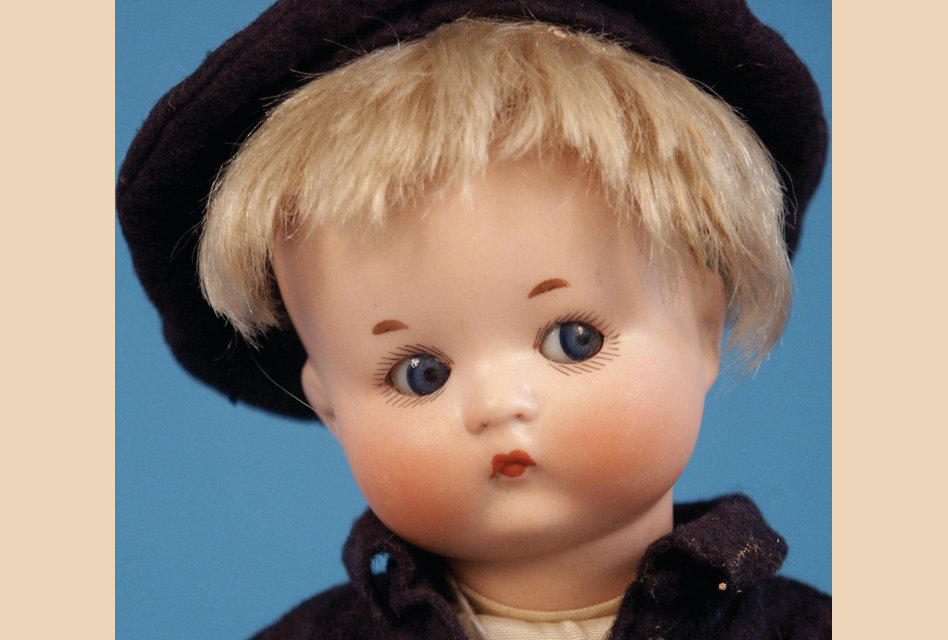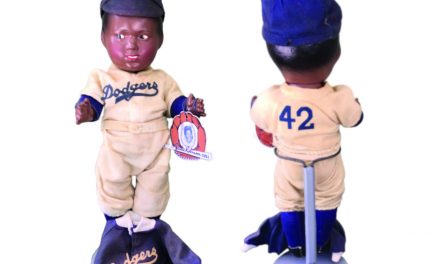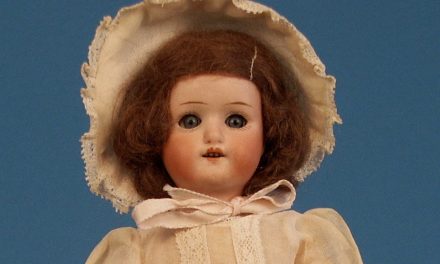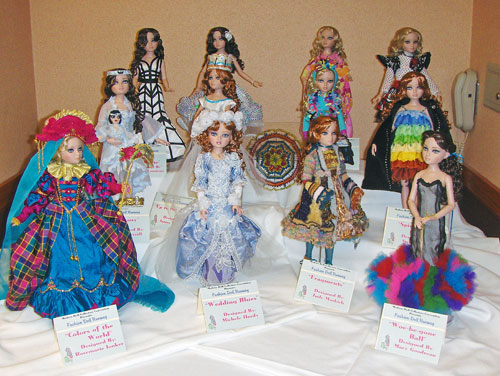By Jan Foulke
Q: I fell in love with this doll, which I saw pictured in an advertisement for an auction, but there was no identification of it in the ad. I would like to find one like this. Can you tell me anything about her?

A: Indeed I can. This doll is Just Me. Her copyright was registered by George Borgfeldt & Co. in 1928. Borgfeldt was a very large New York importer and distributer of dolls and toys. He had a branch in Sonneberg, Germany, where he did a lot of business with the doll and porcelain factory of Armand Marseille, located in Koppelsdorf, near Sonneberg.
Marseille bought a toy factory in 1884, then in 1885 a porcelain factory, which he converted to making doll heads, making him one of the few doll producers positioned to make complete dolls. Marseille was an astute businessman, and his company prospered. He became the largest manufacturer of dolls in Germany, with over a thousand employees. He was known around the world for his products. He produced quality items, but not luxury goods. He also sold bisque heads and doll parts to other factories and verlagers (assemblers who bought parts from different suppliers and assembled dolls rather than actually making them).
Just Me’s mold number is 310 and the complete mark inscribed on the back of her head is “Just Me Registered Germany A.M. 310” with a size number. Most Just Me dolls are 7.5 to 10 inches tall, but sometimes larger models are found in the fired-bisque category.
Just Me’s cute little face and body are reminiscent of Effanbee’s Patsy doll which came out at about the same time, and both dolls depict a sweet little girl. Just Me has a bisque head with a delightful character face featuring sleeping side-glancing eyes, chubby cheeks, a tiny closed rosebud mouth, and a mohair wig. There are two versions.
One is a regular fired-bisque head. This means the bisque head is fired in a kiln, tinted, and then fired again to set the colors. The other version is a painted-bisque head. This means that the head is fired and painted, but given no second firing. The color is quite vivid, the paint is thick, and over time there can be some peeling of the paint, especially under the wig or where it is glued onto the head. The head cannot be washed or the paint will come off. The painted bisque was much cheaper to produce. Collectors do not pay as much for the painted-bisque models as they do the fired-bisque examples. After you look at a few examples, you will learn to tell the difference.
Just Me has a special body. It is a five-piece composition body with a pink finish and rosy shaded knees and elbows. It has a chubby tummy and slender one-piece arms and legs. One arm is bent at the elbow, the other is straighter. It is important that the head is on the correct body to bring full value.
In the 1930s, Jennie Graves of the Vogue Doll Shoppe sold dressed dolls. She used the Just Me doll. Since Borgfeldt owned the trademark, she must have come to some agreement with him to purchase dolls. She designed lovely costumes, which delighted her customers. Her business grew rapidly, and she had to hire additional help. All of this occurred before the introduction of her 8-inch plastic doll, which became the famous Ginny. At first Graves used the fired-bisque head, then switched to the painted-bisque model. It’s a real bonus for a collector to find an all-original Just Me with the Vogue Doll Shoppe-tagged outfit. The dolls were in the luxury class, selling for about $16 each — a top price for the times. Just Me usually wears a short above-the-knee dress with a matching hat or bonnet, undies, socks, and leatherette tie shoes with pompons.
Good luck in your search for a delightful new addition to your collection!
Jan Foulke is an authority on antique and vintage dolls, with over 40 years of experience in the field. She’s the author of the full-color reference book “Jan Foulke’s Guide to Dolls” and writes the Antique Q&A column in each issue of DOLLS magazine. Send your antique doll questions to Jan Foulke.
Subscribe now to read Foulke’s column in every issue and to get access to her past columns in DOLLS online archive of past issues!







